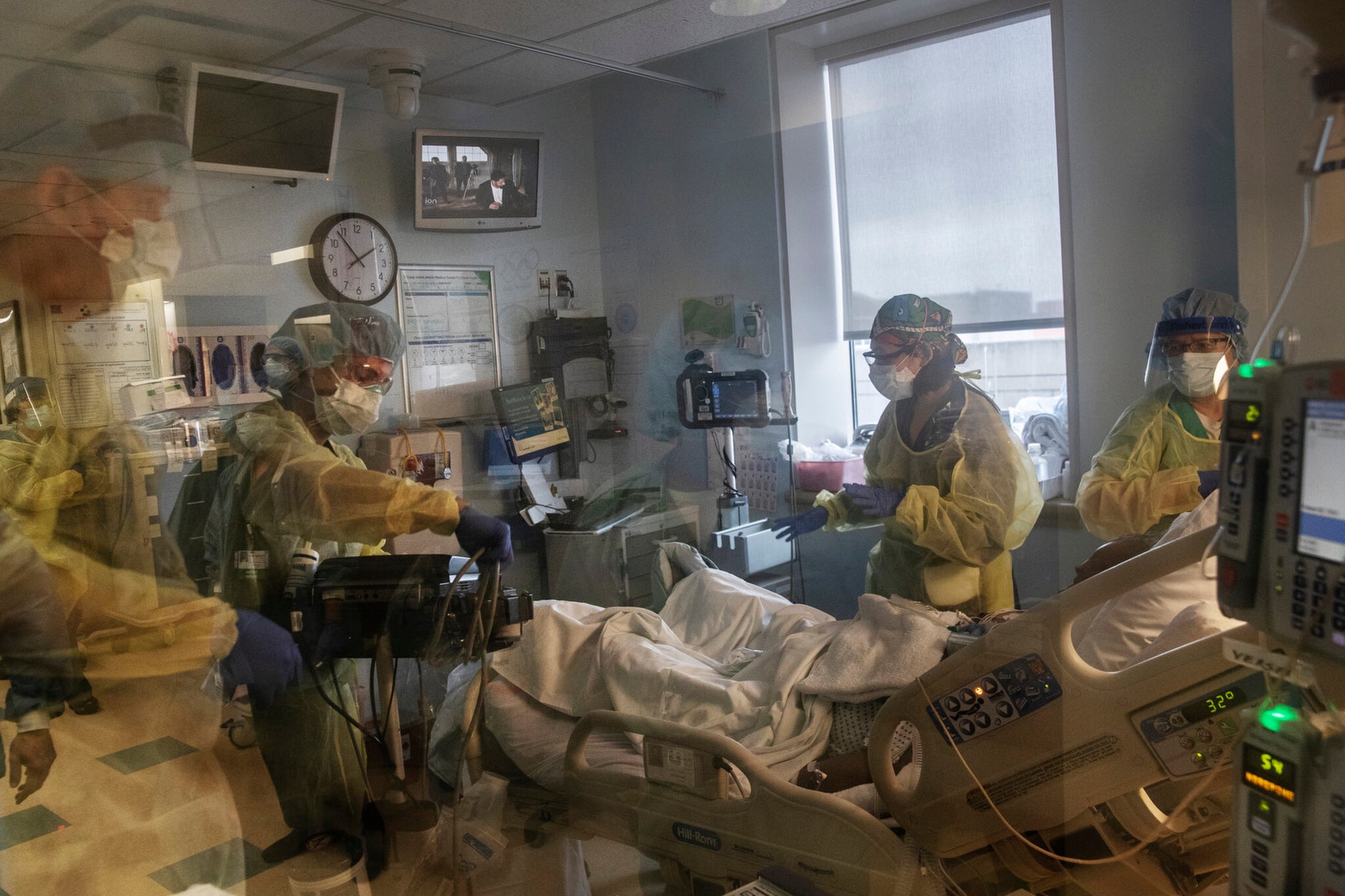
 i_need_contribute
i_need_contribute

Among health care workers, nurses face a particularly high risk of contracting the virus, according to a recent report by the C.D.C.Credit...Victor J. Blue for The New York Times
In Albany, an outbreak of the coronavirus erupted among nurses and patients in the cancer unit of a hospital.
Across the state, nurses at hospitals in the Buffalo area bought their own masks and face shields out of concern about the quality of supplies in stock.
And when an emergency room nurse in New Rochelle began her shift, she was asked to care for 15 patients, after her co-workers called out sick.
The accounts recall the early days of the pandemic, when the virus ravaged New York — but these scenes took place over the past several weeks. Nurses and other health care workers in the state have begun to warn about the conditions in hospitals, as virus patients are checking in at an alarming rate.
“We’re worse off in some ways than we were in the beginning,” said Shalon Matthews, an emergency room nurse in New Rochelle. “We need staff, we need help, we need resources. I’m fearful for my patients and I’m fearful that the same thing that happened back in March, it’s going to happen again — and once again, we’re not prepared.”
Hospitalizations in the state have recently reached levels not seen since May, when New York was the epicenter of the crisis in the U.S. On Wednesday, more than 6,000 people were hospitalized and being treated for the virus.

Earlier this month, nurses from Montefiore New Rochelle Hospital staged a two-day walkout over working conditions in the hospital. Credit...Gregg Vigliotti for The New York Times
The improvement of virus treatments methods, leading to lower death rates, and the arrival of the vaccine this week make a repeat of the spring seem unlikely. Nurses are among a group prioritized to get some of the first doses of the vaccine.
Yet more and more nurses in the state are now worried that poor safety protocols at their hospitals and low staffing levels — partly a result of departures after low morale in the spring — could put patients at risk, and increase the physical and emotional toll on health care workers.
Reflecting the growing tension, roughly 1,000 workers walked off their jobs at health centers in New Rochelle and Albany earlier this month, echoing a growing trend around the country.
Earlier this fall, more than 400 nurses at a hospital in Connecticut went on strike over issues including a lack of personal protective equipment. Twice as many nurses took the same step weeks later in suburban Pennsylvania, citing fears around low staffing levels. The same concerns were raised last week at multiple medical facilities in California.
At Albany Medical Center in New York, Michael Fitzsimmons, a critical care nurse at the hospital for 23 years, said nurses have been upset that the hospital’s protective equipment and safety protocols feel insufficient.
Over the summer, nurses were directed to stop labeling single-use N95 masks so they could be decontaminated and reused up to 20 times, said Mr. Fitzsimmons. But he said the reprocessed masks that he and others have been given are often discolored, stained or do not fit correctly.
A firm in Putnam County that consults on industrial hygiene examined a federal complaint that a state nurses’ union filed over general procedures and found that workers were being placed at an “unreasonable risk of exposure” to the virus.
“The materials used to clean them are destructive and eventually going to affect their fit,” Edward Olmsted, who runs the firm, said of the masks. “It almost gives nurses a false sense of security.”
The C.D.C. recommends that a single N95 mask be reused up to five times, and only so when a hospital is experiencing a “crisis” level shortage of supplies, like many did in the spring.
A hospital spokesman, Matt Markham, said that Albany Medical has more than a 90-day supply of gear. He added that all masks are inspected before they are either kept in supply or destroyed, and that staff members are not forced to reuse a mask they are not comfortable using.

The hospitalization rates in the states have increased to levels not seen since May, as more and more people test positive for the virus. Credit...James Estrin/The New York Times
Late last month, at least eight patients and 14 staff members at Albany Medical tested positive for the virus after an outbreak in an oncology unit with 27 beds, according to the New York State Nurses Association.